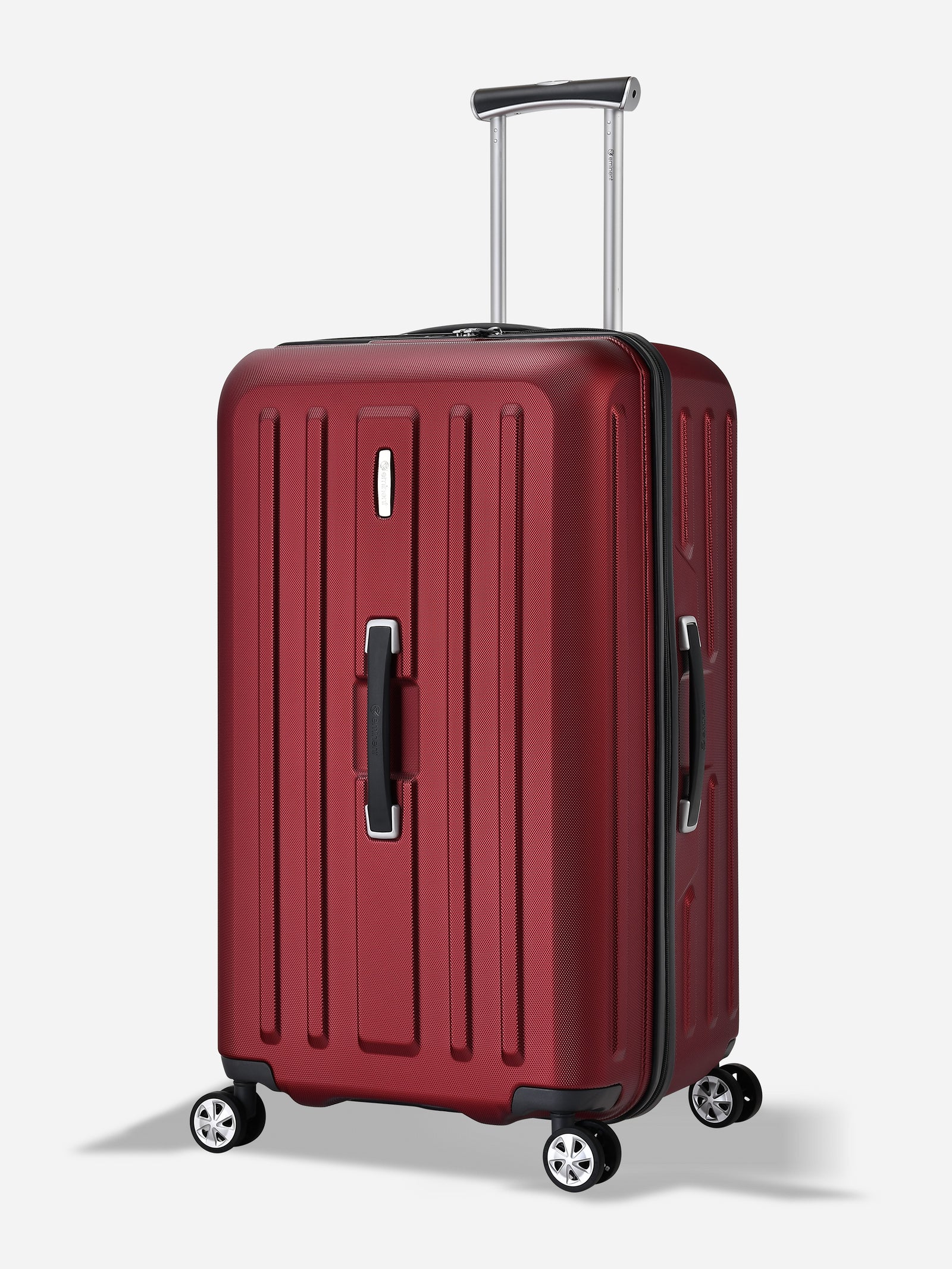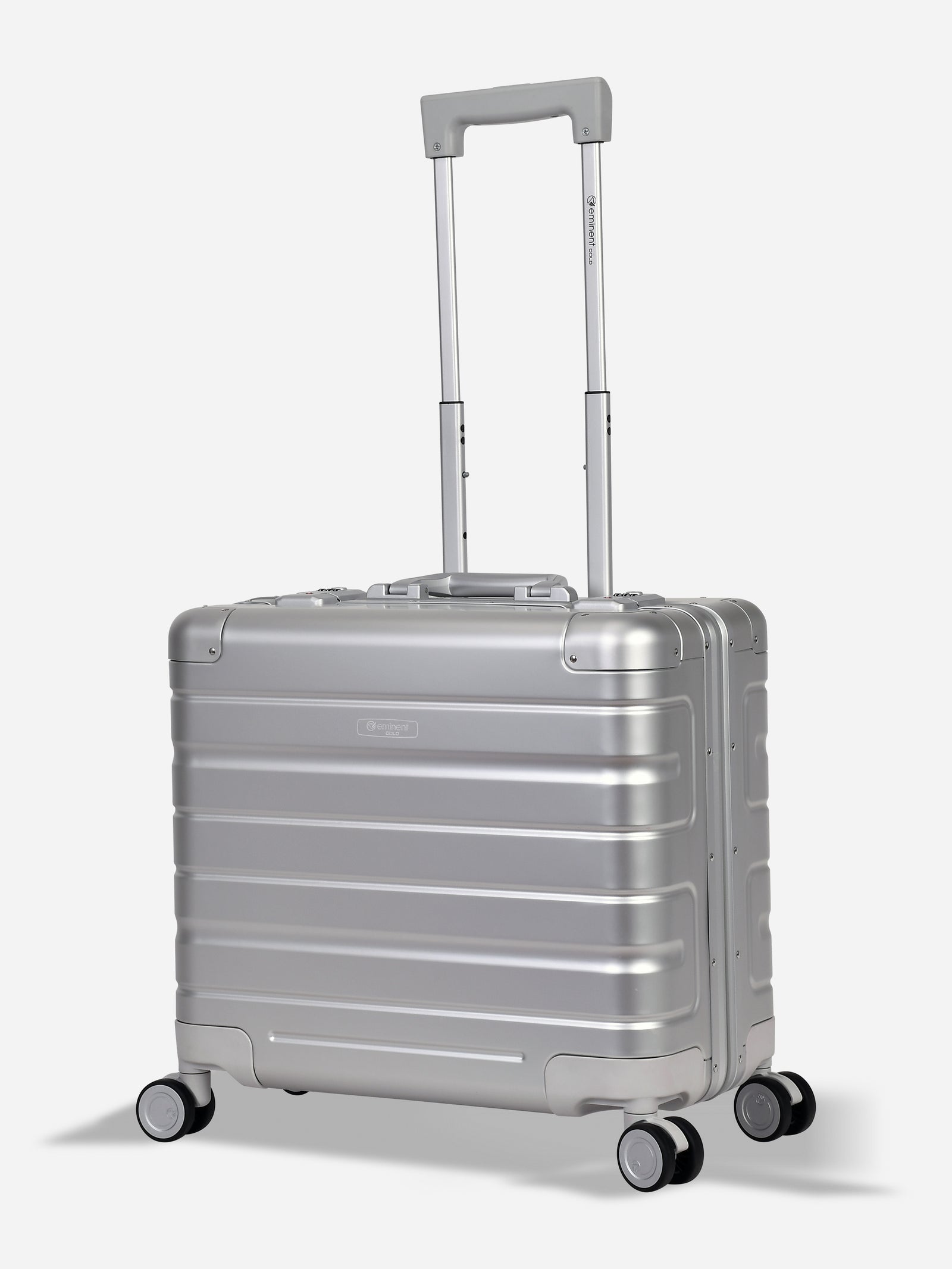COMPREHENSIVE PACKING CHECKLIST FOR YOUR EUROPEAN ADVENTURE

Embarking on a journey through Europe is an exhilarating experience that allows you to fully immerse yourself in the diverse cultures, breathtaking landscapes, and rich histories of the continent. However, getting ready for such an adventure can feel overwhelming, especially when it comes to deciding what to pack. This comprehensive guide is here to help simplify your preparations by providing you with essential tips and expert advice to ensure you have everything you need for your ultimate travel experience.
In short: When organizing your luggage, essentials include versatile clothing, comfortable shoes, travel adapters, and important documents. Don't forget to pack layers for varying weather conditions and consider the cultural norms of each country you'll be visiting. Happy travels!
CRITICAL ITEMS
-
Versatile Clothing: Pack layers like lightweight shirts, sweaters, and jackets to adapt to changing weather conditions across different regions.
-
Comfortable Walking Shoes: Cobblestone streets and long sightseeing days require durable and comfortable shoes.
-
Travel Adapters and Converters: Countries have different plug types and voltage, so bring a universal adapter and a converter if needed.
-
Important Documents: Carry your passport, visa (if applicable), travel insurance, and digital and physical copies of these documents.
-
Reusable Water Bottle: Stay hydrated while reducing waste. A collapsible bottle with a filter can be particularly handy.
-
Toiletries and First Aid Kit: Include travel-sized toiletries and essentials like band-aids, pain relievers, and hand sanitizer.
-
Weather-Appropriate Accessories: Bring a scarf, sunglasses, umbrella, and hat to protect yourself from varying weather conditions.
-
Small Daypack: Use it for daily outings to carry snacks, a camera, maps, and other essentials.
-
Electronics and Chargers: Don’t forget your smartphone, camera, portable charger, and charging cables.
-
Packing Organizers: Use packing cubes or compression bags to save space and keep your items organized.
Shop our Collection
UNDERSTANDING THE CLIMATE
Europe's weather can vary dramatically depending on the region and time of year. Before you start assembling your travel gear, it's vital to check the climate conditions of your destination. For example, northern countries like Sweden may require warmer attire, while southern locales such as Italy might be more temperate.
QUICK CLIMATE OVERVIEW
Europe's climate varies significantly by region, so packing the right attire is crucial to stay comfortable and prepared for different weather conditions. Here's a breakdown of typical climates and recommended clothing for each area:
NORTHERN PART OF THE CONTINENT (COLD, WET)
-
Warm layers (sweaters, thermals)
-
Waterproof jacket
WESTERN PART OF THE CONTINENT (VARIABLE, MILD)
-
Light layers (easily adjustable for changing weather)
-
Raincoat or water-resistant outerwear
SOUTHERN PART OF THE CONTINENT (WARM, SUNNY)
-
Light, breathable clothing (cotton or linen)
-
Sun protection (hat, sunglasses, sunscreen)
UNDERSTANDING THE MOST POPULAR COUNTRIES
Europe boasts a diverse range of countries, each offering unique attractions, cultures, and experiences. Understanding what each destination offers can help you plan your trip effectively and create a balanced itinerary that caters to your interests.
France is famous for its rich history, art, and cuisine. From iconic landmarks like the Eiffel Tower in Paris to charming countryside villages, the country blends elegance with tradition. Explore the Louvre, sip wine in Provence, or enjoy beach resorts in the French Riviera.
Similarly, Italy captivates visitors with ancient wonders such as the Colosseum in Rome, the canals of Venice, and the art of Florence. Don't forget the picturesque Amalfi Coast and Tuscany's rolling hills.
Spain offers vibrant festivals like La Tomatina, great tapas, and architectural marvels such as the Sagrada Família in Barcelona. Its sunny climate and rich culture are perfect for beach and city adventures alike.
On the other hand, Greece combines ancient ruins, crystal-clear waters, and the beauty of islands like Santorini and Mykonos.
For urban exploration, London in the UK offers both historical landmarks like Big Ben and modern attractions such as the London Eye, while Germany boasts fairy-tale castles, medieval towns, and modern hubs like Berlin.
CRAFTING YOUR ESSENTIALS CHECKLIST
Creating a comprehensive travel essentials checklist helps you stay organized and avoid overpacking. Start with basic necessities like clothing, toiletries, and important documents. Focus on versatile clothing items—such as layers that work for different weather conditions. Comfortable shoes are essential, especially when travelling through cities with cobblestone streets like Paris or London.
Next, include essential toiletries in travel-sized containers to comply with airline regulations. Don’t forget adapters or converters for electronics, as outlet types vary between countries. A travel-sized first aid kit with bandaids and pain relievers will come in handy for those unexpected mishaps.
For day-to-day needs, bring a reusable water bottle, packing cubes, and a good backpack to organize your items. Finally, remember much-needed travel documents like your passport, flight tickets, and hotel reservations to cover all aspects of your trip. Stay prepared and enjoy your adventure!
MUST-HAVE CLOTHING ITEMS FOR TRAVELLING THE CONTINENT
Packing the right clothing for a trip is essential to stay comfortable, stylish, and prepared for varying climates. Layers are your best friend since the weather can change quickly, especially when traveling across multiple regions.
Start with comfortable walking shoes, as cobblestone streets and long sightseeing days are the norm. Opt for shoes that are versatile and work with both casual and dressier outfits. A pair of well-fitting jeans or neutral trousers is a staple, ideal for casual strolls or dining out. For cooler days, layering pieces such as a lightweight jacket, cardigan, or pullover are key.
Europeans typically favor smart-casual attire, so pack a couple of stylish tops or blouses that can be dressed up or down. A scarf can serve as both a fashionable accessory and a practical layer for chilly mornings. In warmer climates, breathable fabrics like cotton or linen are essential.
For dressier occasions, bring a versatile dress or collared shirt. Finally, pack weather-appropriate outerwear like a rain jacket or a compact umbrella, especially for regions like the UK or Northern Europe where rain is frequent. With these essentials, you’ll blend in seamlessly while staying prepared for all scenarios.
ESSENTIAL TOILETRIES TO PACK FOR YOUR TRIP
When traveling to Europe, having essential toiletries on hand ensures comfort and hygiene without the hassle of finding replacements abroad. Start with a toiletry bag that keeps your items organized and compliant with travel restrictions—particularly for carry-on luggage where liquids must be under 100ml per container.
Pack travel-sized toothpaste, a toothbrush, and floss to maintain oral hygiene. For your skin, bring moisturizer, sunscreen, and lip balm, as travel can leave skin dry or exposed to intense sun, especially in Mediterranean areas. A compact face cleanser is also handy for freshening up after long travel days.
Don't forget shampoo, conditioner, and body wash, though many hotels provide these. Including dry shampoo can save time if you're on a tight schedule. Deodorant is essential for staying fresh during long days of walking and sightseeing. A razor, nail clippers, and tweezers help with grooming needs, while a mini first-aid kit with pain relievers, band-aids, and any personal medications ensures you're prepared for minor mishaps.
Lastly, pack wet wipes, hand sanitizer, and travel tissues for convenience, particularly when using public restrooms. With these essentials, you'll stay clean, refreshed, and ready for your adventure!
IMPORTANT DOCUMENTS AND MONEY ESSENTIALS
When traveling to Europe, having the right documents and money essentials is crucial for a smooth journey. Start with your passport, ensuring it’s valid for at least six months beyond your travel dates. For extra security, carry both physical and digital copies of your passport, visa (if needed), and itinerary.
Pack a driver’s license and an International Driving Permit if you plan to rent a car. It's also smart to bring a travel insurance policy with coverage details for medical emergencies and trip disruptions. Keep a copy of your flight tickets, train passes, and any hotel reservations on your phone and in hard copy as a backup.
For money essentials, bring a combination of payment methods. A credit card with no foreign transaction fees is ideal for most purchases. Additionally, carry a debit card to withdraw local currency from ATMs. Many destinations also accept contactless payments via phone apps like Apple Pay or Google Pay.
It's wise to carry a small amount of cash in local currency for tips, small purchases, and places that don’t accept cards. Finally, keep everything organized in a travel wallet or document holder to reduce stress and stay prepared!
TECHNOLOGY AND GADGETS TO BRING ALONG
Bringing the right technology and gadgets on your trip can enhance your experience and keep you connected. Start with your smartphone—it’s indispensable for navigation, communication, and photography. Download key travel apps, such as maps, translation tools, and offline guides, before you leave.
A portable charger (power bank) is essential for long travel days, ensuring your devices stay powered. Additionally, pack a universal power adapter compatible with outlets, as plug types can vary by country. If you have multiple devices, a multi-port USB charger can simplify charging at night.
For capturing memories, a compact camera or a smartphone with a high-quality camera should suffice. If you’re a content creator, consider bringing a tripod or gimbal for steady shots.
For entertainment, download your favorite music, podcasts, or movies to your smartphone or tablet. Noise-canceling headphones or earbuds are perfect for long flights, train rides, or crowded city environments.
A laptop or e-reader can be useful depending on your travel needs, but minimize unnecessary devices to save space. Finally, pack charging cables, memory cards, and any other tech accessories you’ll need to stay organized, connected, and entertained throughout your trip!
MISCELLANEOUS ITEMS YOU SHOULDN'T FORGET TO PACK
When traveling to Europe, packing a few miscellaneous but essential items can make your trip more comfortable and hassle-free. Start with a reusable water bottle, especially one with a filter if you'll be visiting places with varying water quality. Staying hydrated is crucial during long days of sightseeing.
A daypack or light backpack is perfect for carrying daily essentials like snacks, a guidebook, and a camera. Don’t forget sunglasses and a hat for sun protection, especially if traveling in summer. For unexpected weather, pack a compact umbrella or lightweight rain poncho.
Include ziplock bags or packing cubes to keep your belongings organized and protect electronics or documents from moisture. A travel laundry kit with detergent sheets and a sink stopper can help if you plan to wash clothes on the go.
For extra convenience, bring a small sewing kit for quick fixes, safety pins, and a travel lock to secure your luggage. Guidebooks, journals, or printed copies of your itinerary can also be helpful. Lastly, a travel pillow and sleep mask ensure comfort during long flights or overnight trains. These small extras can greatly enhance your travel experience!
OPTIONAL BRING-ALONGS
While packing light is often recommended for travel, a few optional items can enhance your trip, depending on your preferences and activities. These extras can add convenience, entertainment, and flexibility to your travel experience.
For added comfort, consider bringing a travel pillow and sleep mask, especially for long flights, train rides, or overnight journeys. If you enjoy reading, an e-reader or a couple of paperback books can help pass the time. Travelers planning outdoor adventures might find a compact travel towel useful for beach visits, hiking, or spontaneous swimming.
A portable laundry kit (detergent sheets and a sink stopper) is great for washing clothes on longer trips. Additionally, reusable shopping bags are handy for groceries or souvenirs, as many countries charge for disposable bags.
If you’re a photography enthusiast, a tripod or gimbal can help capture steady, high-quality photos and videos. Entertainment gadgets like noise-canceling headphones can also improve your journey by reducing distractions in crowded areas.
Finally, if you're visiting multiple destinations, a travel guidebook or printed itinerary with offline maps can provide useful insights and directions, especially in remote areas without reliable internet. These optional items can make your trip more enjoyable and hassle-free!
SMART PACKING STRATEGIES
To maximize space in your luggage, consider these effective packing strategies:
-
Rolling Clothes: This technique saves space and minimizes wrinkles. Roll your clothes tightly and place them in your suitcase.
-
Utilizing Packing Cubes: These help organize your belongings and make it easier to find what you need. You can categorize items by type or outfit.
-
Layering: Wear your bulkiest items on the plane to free up space in your bag. A jacket or sweater can double as a blanket during your flight.
-
Packing in Outfits: Plan your wardrobe by packing complete outfits for each day, reducing the number of extra items you bring and ensuring versatility.
-
Filling Empty Spaces: Use small items like socks, undergarments, or accessories to fill gaps in shoes or corners of your bag.
-
Vacuum-Sealed Bags: For longer trips, vacuum-sealed bags can compress bulky items like coats and sweaters, saving space.
-
Limit Shoes: Stick to two or three versatile pairs of shoes that work for both casual and formal settings. Shoes take up significant space, so pack wisely.
-
Pre-Packing Trial: Test-pack your suitcase before your trip to adjust items and avoid last-minute stress.
FINDING THE RIGHT BALANCE
When preparing for your trip, you may find yourself debating whether to pack light or bring more items. Here’s a breakdown of the pros and cons of each approach:
Deciding whether to pack light or heavy depends on your travel style, destination, and itinerary. Packing light offers mobility and flexibility. With fewer items, you can easily carry your luggage, move around busy areas, and take stairs or cobblestone streets without difficulty. It also allows for spontaneous changes in plans, as you won’t be weighed down by large bags. Additionally, you can save money by avoiding extra baggage fees and the hassle of waiting for checked luggage at airports. However, packing light may leave you unprepared for some situations, as you might lack certain items you need.
On the other hand, packing heavy ensures preparedness. You'll have a wider variety of clothing, shoes, and toiletries to handle various activities and weather conditions. There’s less risk of forgetting essentials or needing to buy items on the road. However, this comes with trade-offs. Large suitcases can be cumbersome to handle in crowded spaces and make travel logistics more difficult. You may face additional baggage fees and need a more rigid itinerary, especially for transport and accommodation.
Ultimately, the best option is often a balance—pack light enough to stay mobile but bring essential items that fit your specific needs.
TOP ORGANIZING TIPS FROM EXPERIENCED TRAVELERS
-
Plan Outfits: Lay out your outfits for each day to avoid overpacking and ensure you have everything you need
-
Check Airline Regulations: Familiarize yourself with your airline's baggage policies to avoid unexpected fees
-
Leave Room for Souvenirs: If you plan to shop, leave some space in your luggage for new items
-
Use Compression Bags: These can help reduce the volume of your clothing, allowing you to pack more efficiently
-
Stay Organized: Use packing cubes or ziplock bags to keep similar items together and make unpacking easier
-
Pack a Laundry Bag: A small, foldable bag for dirty clothes helps keep your suitcase organized and fresh
-
Roll Your Clothes: Rolling instead of folding your clothes saves space and reduces wrinkles
-
Bring a Small Daypack: Useful for carrying essentials like water, snacks, and maps during day trips or sightseeing
-
Wear Your Bulkiest Items: Save space by wearing heavier items, like jackets or boots, while traveling
-
Test Your Packed Bag: Before your trip, walk around with your fully packed bag to check its weight and comfort
-
Have a "Grab-and-Go" Essentials Kit: Include items like toiletries, chargers, and travel documents in an easily accessible bag
KEY FACTS SUMMARIZED
-
Layers are key, as the weather in Europe can vary greatly from day to night.
-
Comfortable walking shoes are a must, as you'll likely be doing a lot of exploring on foot
-
Don't forget adapters or converters for your electronics, as outlets in Europe may be different than what you're used to
-
Consider bringing a reusable water bottle to save money, reduce waste, and stay hydrated while traveling
-
Packing light is recommended, as you may need to carry your luggage up stairs or across cobblestone streets
-
Research the dress code for any religious sites, cultural norms, or fancy restaurants you plan to visit to ensure respectful attire
-
A travel scarf or shawl can come in handy for covering up in conservative areas or staying warm on chilly evenings
-
Pack versatile clothing items that can be layered for different temperatures
-
Bring a travel-sized first aid kit with essentials like band-aids, pain relievers, and any necessary medications
-
Include important documents such as passports, visas, travel insurance information, and emergency contact numbers
-
Pack toiletries in travel-sized containers to save space in your luggage
CONCLUSION
Getting ready for your European adventure is an exciting process that doesn't have to be daunting. By familiarizing yourself with the climate, curating a well-thought-out checklist, and utilizing clever packing techniques, you can ensure a seamless and enjoyable travel experience. Don't forget to consider the essential items that can elevate your journey and carefully weigh the advantages and disadvantages of your packing strategy. With these expert tips in mind, you're on track for an unforgettable trip to Europe!











